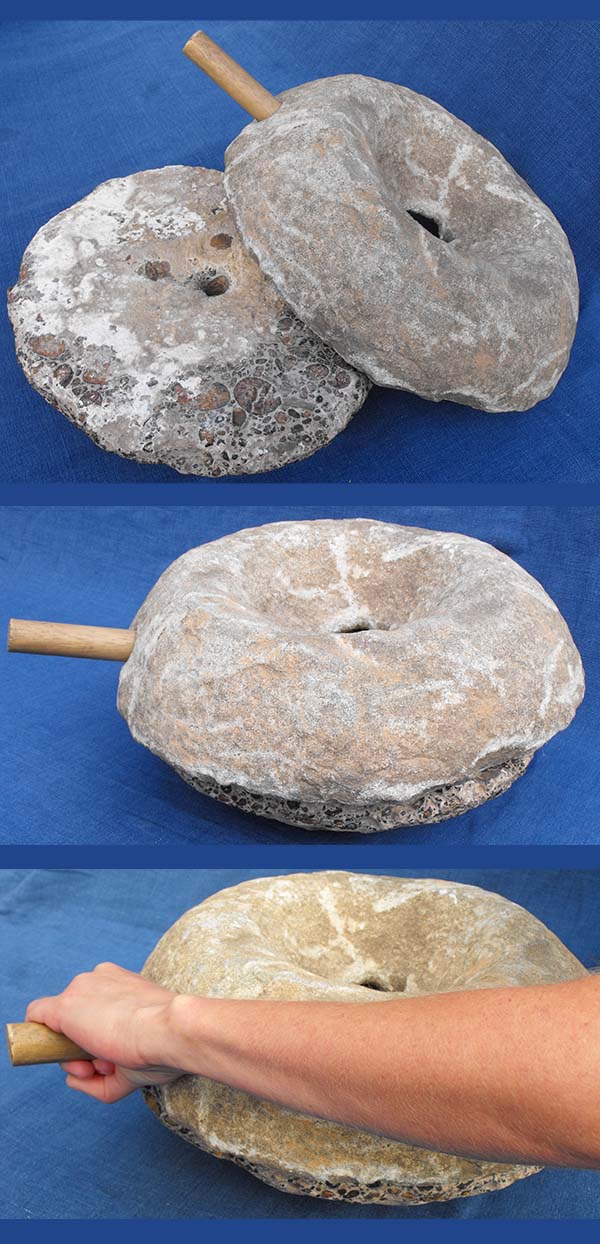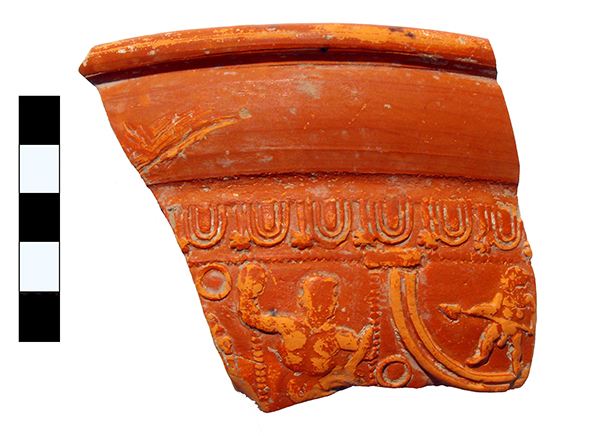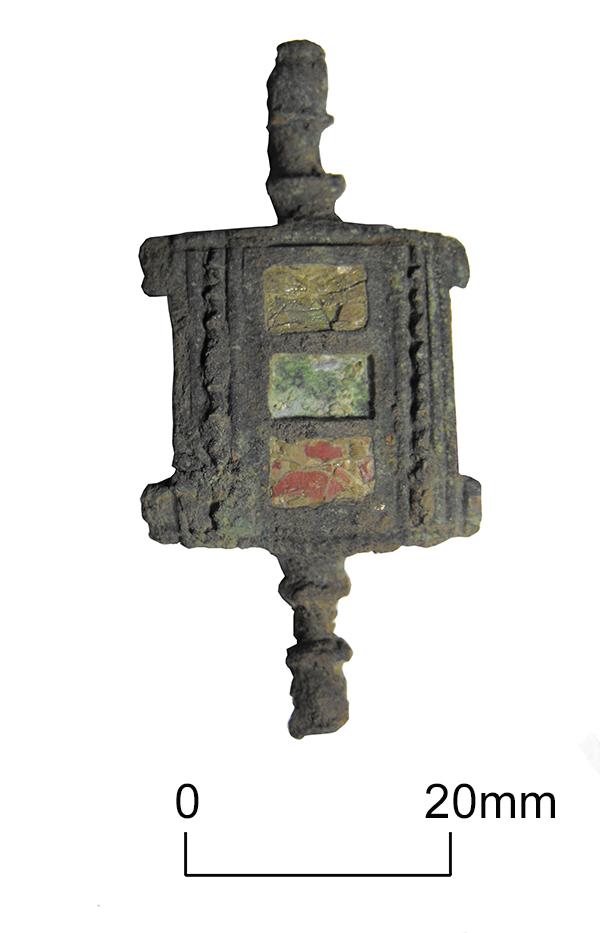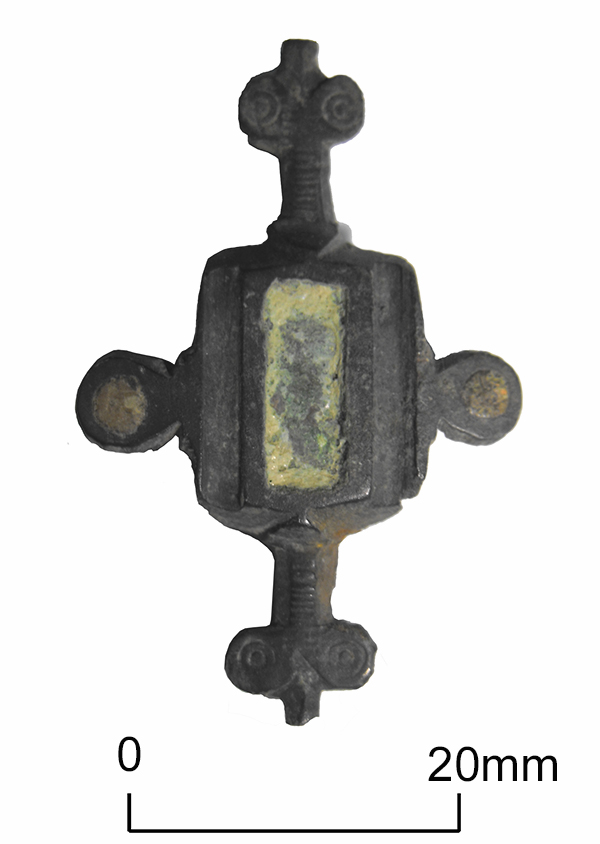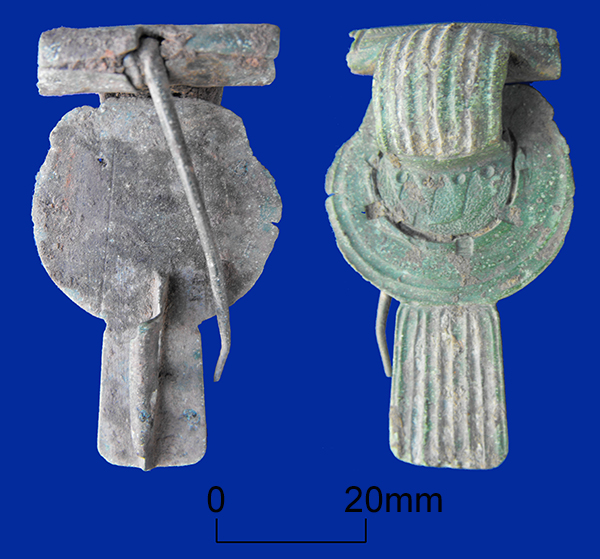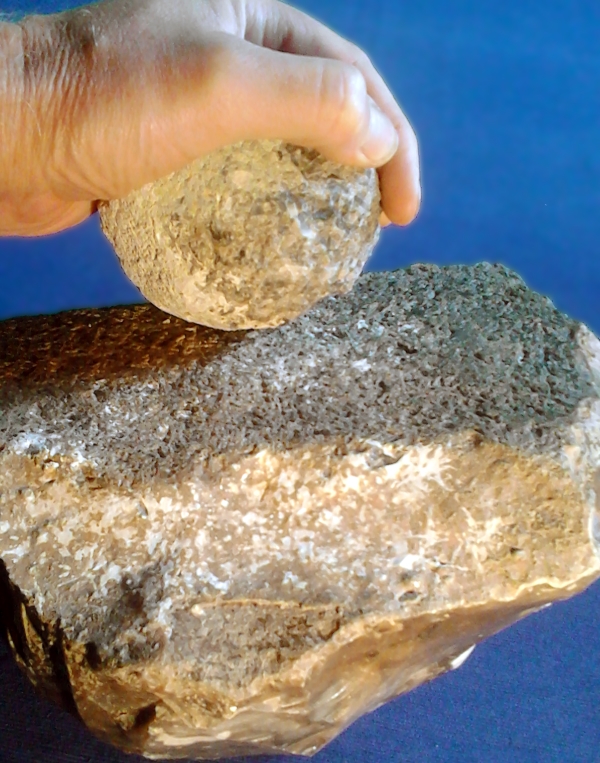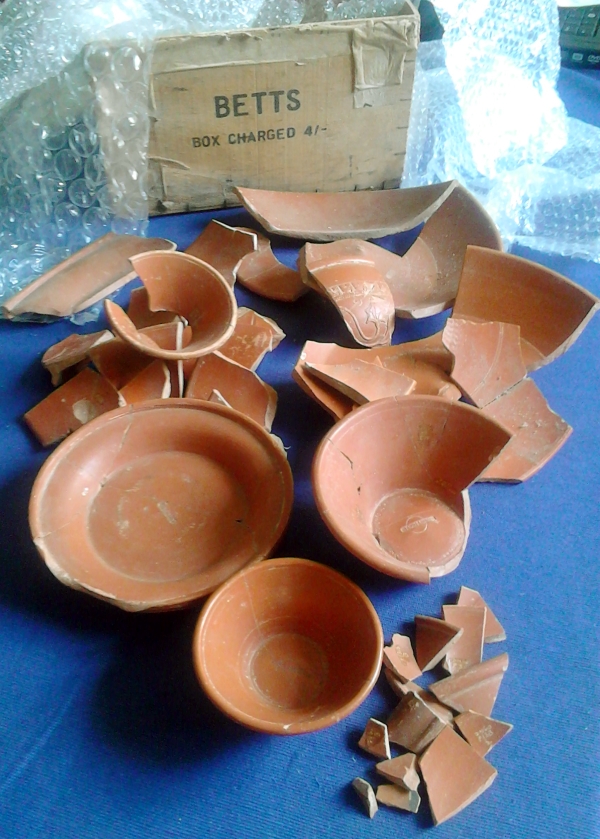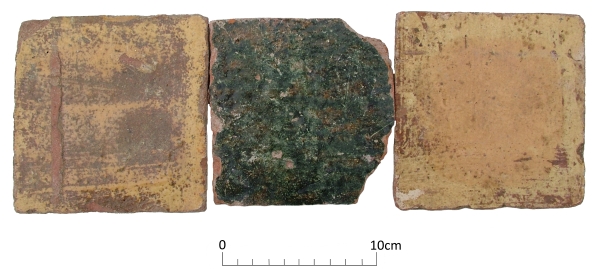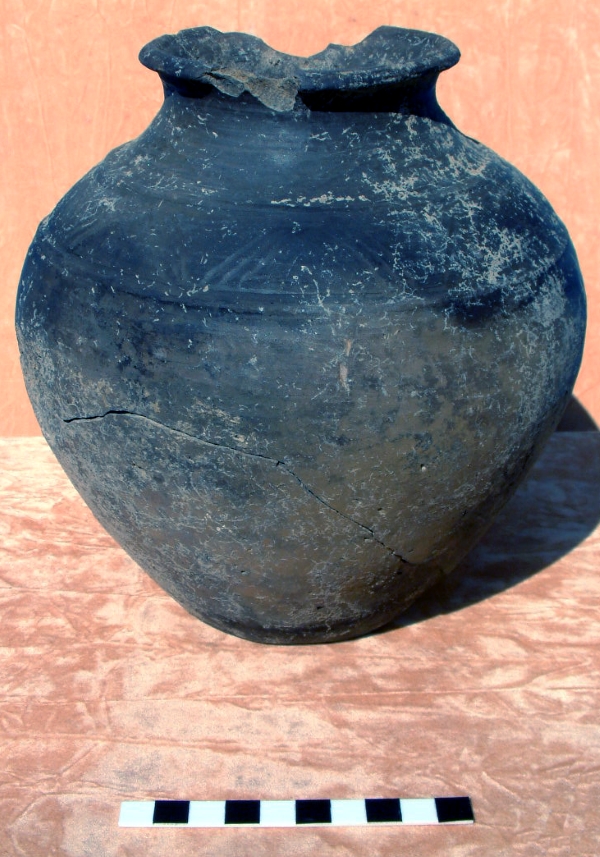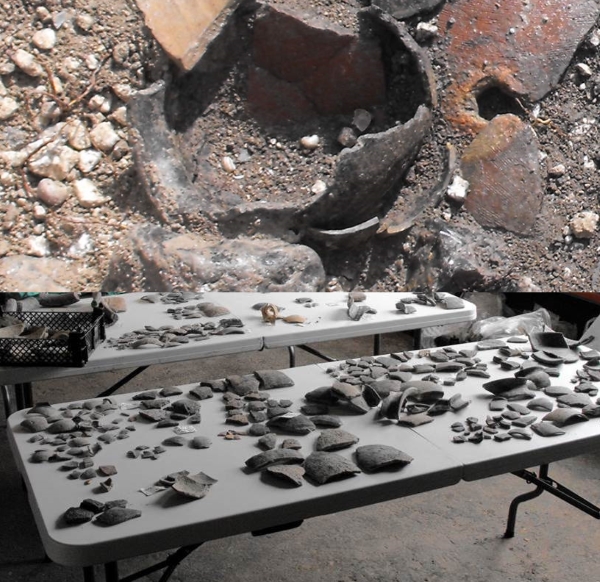
Today’s image for Day 99 of VM_365 shows how the sherds that were recovered from the dump of Roman pottery recovered from the building excavated near Fort House, overlooking Viking Bay in Broadstairs, were recovered and re-assembled into groups, representing the individual pots used in a Roman kitchen.
Each of the sets of sherds that had been lifted from the deposit was carefully washed and then laid out in piles that represented an individual vessel. Of course there were stray sherds, pieces of the puzzle each vessel had become that didn’t belong in the set they had been put with when lifted. Each unknown sherd could be tested against the vessel groups and if possible placed with the right set.
Inevitably there were sherds missing from some vessels and others that seemed not to belong to any of the large sets. Each isolated sherd represents another interesting vessel in itself but a single fragments is perhaps not as impressive as the near complete examples that were gathered together in the process.
Once each group had been assembled, with as many sherds as could be located, the job of examining, identifying and counting the pots could begin…
